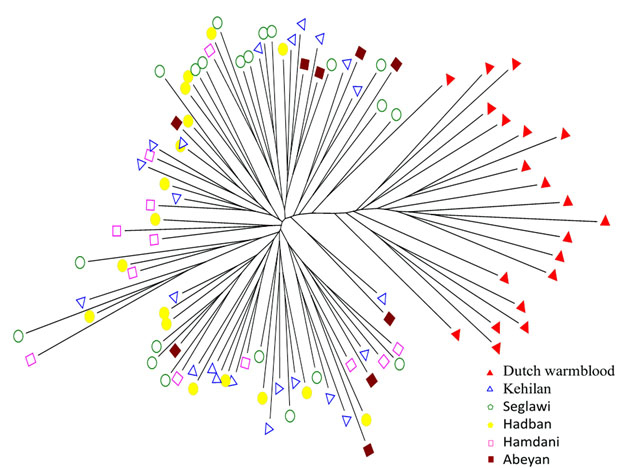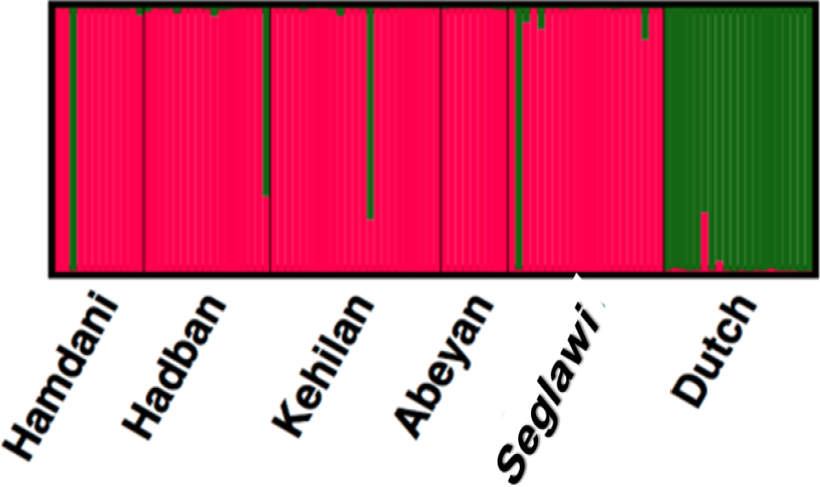Genetic Diversity and Population Assignment of Arabian Horses
Genetic Diversity and Population Assignment of Arabian Horses
Mary A. Sargious1, Hanaa A. Ahmed1, Ragab M. El-Shawarby2, Hatem H. Bakery2, Sherif I. Ramadan3, E. Gus Cothran4 and Ayman Samir Farid5*
Neighbor-joining phylogenetic tree of the three Arabian and the Dutch Warmblood horse populations based on16 microsatellite loci.
Allele frequencies’ distribution across the five basic horse strains “Al Khamsa”.
Individuals neighbor-joining phylogenetic tree across the five basic horse strains “Al Khamsa” in addition to Dutch Warmblood as an out group.
Structure clustering of the five basic horse strains “Al Khamsa” obtained for K = 2.














